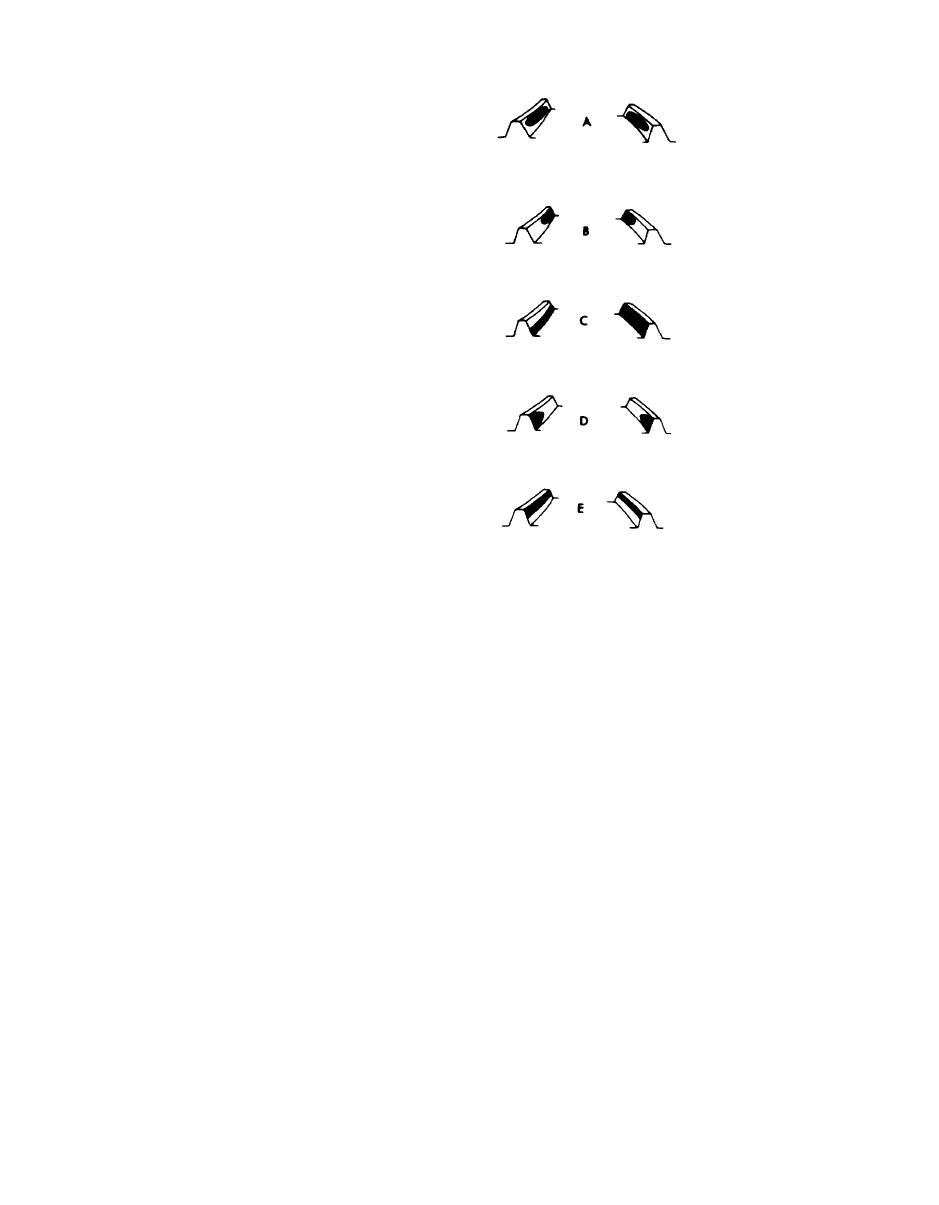 |
|||
|
|
|||
|
Page Title:
Figure 4-16. Differential tooth pattern. |
|
||
| ||||||||||
|
|
 (a) Pattern B indicates excessive contact on
the toe of the tooth. To correct this, move the ring
gear away from the pinion. Then add shims to
COAST
DRIVE
bring the pinion toward the ring gear to correct the
backlash.
(b) Pattern C indicates excessive contact at
the flank of the tooth. To correct this, remove shims
to move the pinion away from the ring gear until
the contact comes to the full working depth of the
gear tooth, without breaking contact at the flank.
Then move the ring gear toward the pinion to
correct the backlash.
(c) Pattern D indicates excessive contact at
the heel of the tooth. To correct this, move the ring
gear toward the pinion. Then remove shims to
move the pinion away from the ring gear for correct
backlash.
(d) Pattern E indicates excessive contact at
the face of the tooth. To correct this, add shims to
bring the pinion toward the ring gear until the
contact covers the flank of the tooth without
breaking contact at the face. Move the ring gear
away from the pinion to correct the backlash.
ME 3930-624-34/4-16
Figure 4-16. Differential tooth pattern.
4-16
|
|
Privacy Statement - Press Release - Copyright Information. - Contact Us |